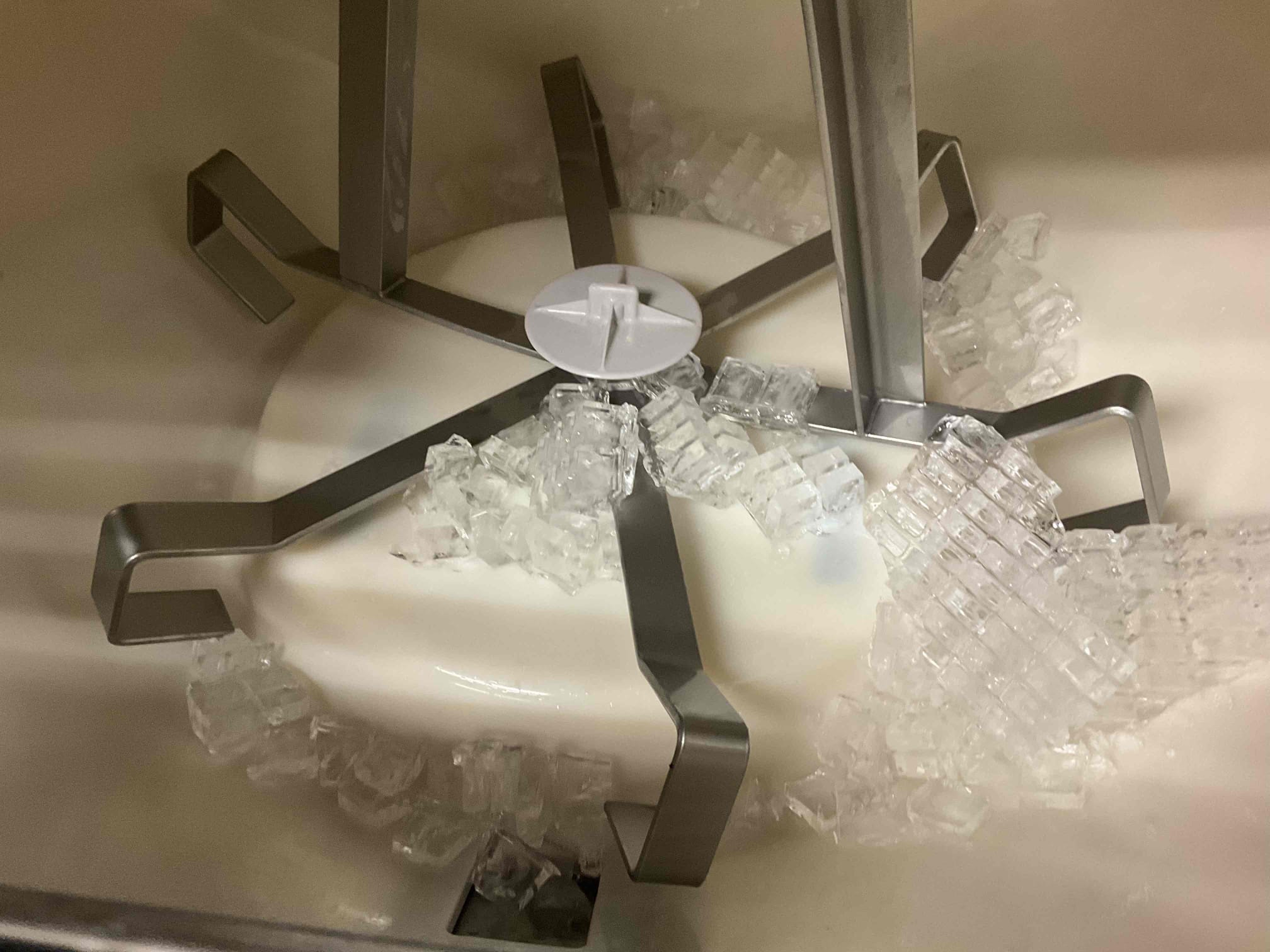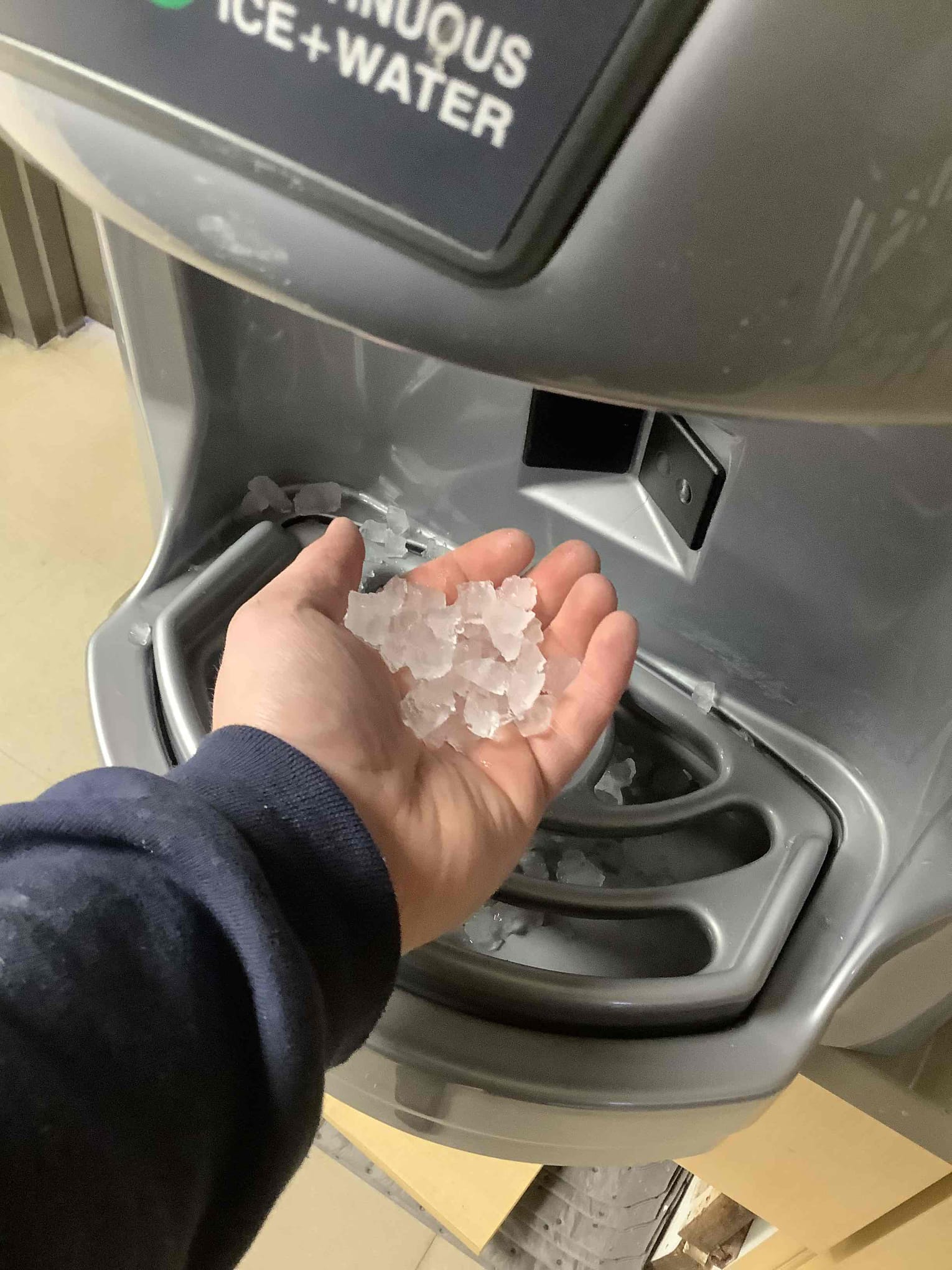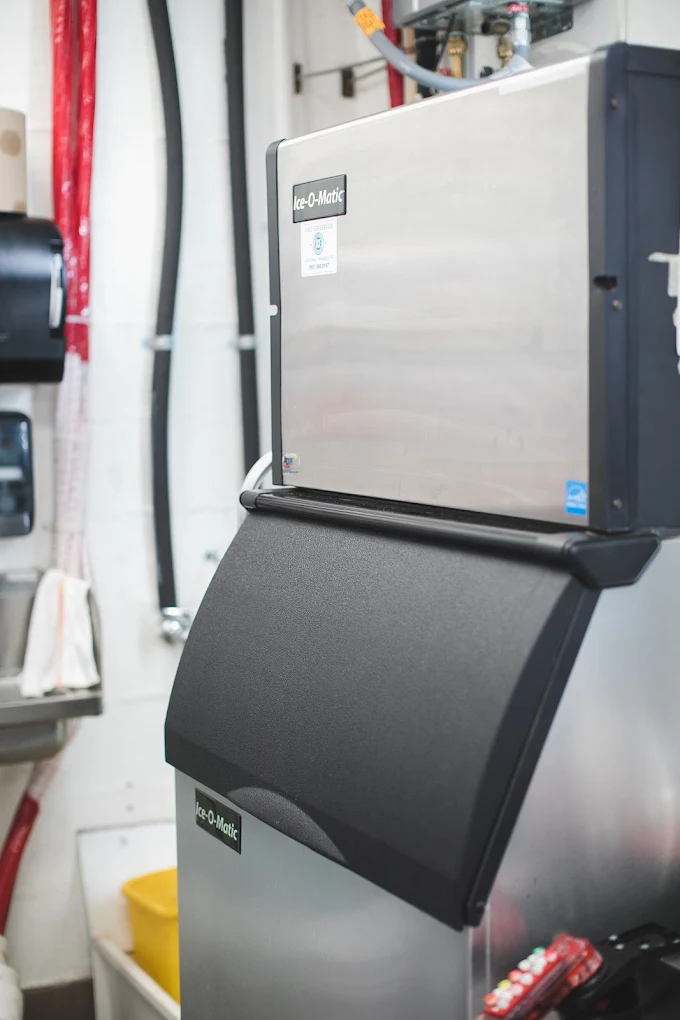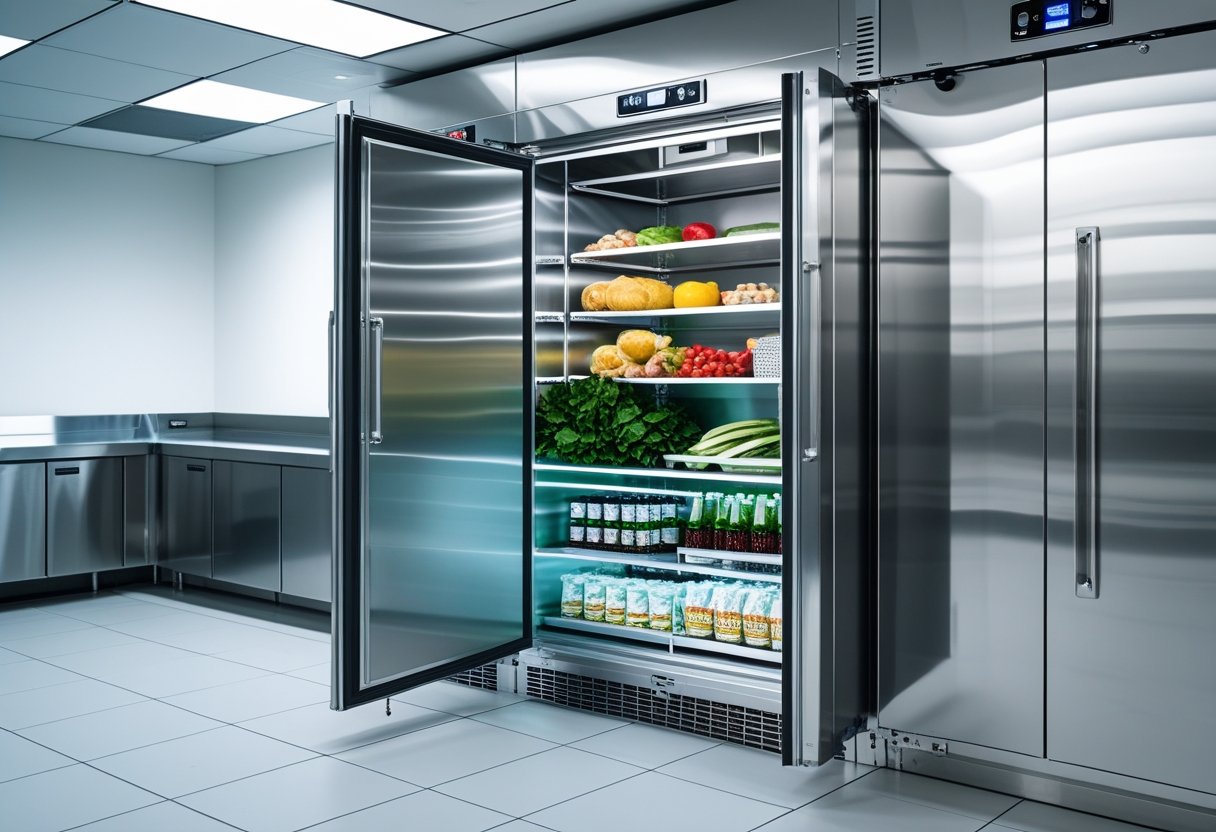proudly serving
the mid-south

Best Practices for Storing Ice to Keep It Fresh and Clean
Keeping your ice clean and fresh is key for any business that relies on it daily. The best way to store ice is in a clean, well-maintained bin that protects it from germs and controls moisture.
This simple step helps you avoid contamination and keeps ice tasting pure, which matters whether you run a busy restaurant, bar, or healthcare facility. Proper storage also means regular cleaning and maintenance of your ice machines and containers.
When you follow safe handling rules—like avoiding contact with bare hands and keeping equipment sanitized—you reduce the risk of any issues that can slow your business down. At Memphis Ice, we’ve been helping Mid-South businesses manage ice and refrigeration needs since 1977, so we know how important these basics are.
Understanding the Importance of Proper Ice Storage
Keeping your ice in the right way affects its quality, safety, and the taste of your drinks. Small details like how you store ice can prevent problems like contamination and flavor changes.
This ensures your ice works well for any use, whether for a cold drink or medical needs.
Preserving Ice Quality
Ice quality depends on how well it stays frozen and how clean it is. When ice melts and refreezes, it can become cloudy and lose its sharp edges, making it less desirable.
To keep ice fresh longer:
- Use airtight containers or covered bins.
- Avoid exposure to warm air or moisture.
Keep your freezer at the right temperature, ideally below 0°F (-18°C). Regularly cleaning your ice storage area prevents buildup of frost or ice clumps.
This helps maintain clear, solid cubes that last longer.
Preventing Contamination
Ice can pick up germs and odors if it’s not stored properly. Dirty containers or frequent touching introduce bacteria.
To keep ice safe:
- Use clean, dedicated ice bins.
- Wash hands before handling ice or use scoops.
Store ice away from strong-smelling foods; ice absorbs odors easily. Contaminated ice can cause health issues and affect your customers’ experience.
Keeping ice bins clean and sealed lowers the risk of mold and slime growth. If you run a business, proper ice hygiene isn’t just good practice—it’s essential for food safety compliance.
Impact on Beverage Taste
Bad ice can spoil the taste of your drinks. When ice absorbs odors or melts unevenly, it dilutes beverages and changes their flavor.
For the best taste:
- Use fresh, odor-free ice.
- Store ice in sealed containers to avoid picking up freezer smells.
Avoid mixing old and new ice to prevent flavor transfer. Flavor is important whether you serve cocktails, soft drinks, or water.
Clear, fresh ice enhances the drinking experience.
Choosing the Right Storage Container
Picking the right container for storing ice affects how long it stays fresh and clean. The best containers protect ice from freezer odors, keep it cold, and fit your needs whether you store a little or a lot.
Knowing the materials, insulation, and size options helps you get the most from your ice supply.
Food-Grade Materials for Ice
Use containers made from food-grade materials to keep your ice safe. Plastic containers labeled BPA-free or FDA-approved are good choices because they won’t leach harmful chemicals.
Avoid old or damaged containers that might crack or let freezer smells in. Glass or stainless steel containers with tight-fitting lids also work well, as they don’t absorb odors.
But glass is heavier and can break, so handle it carefully. Always clean containers before use with warm water and mild soap.
This helps avoid germs or flavors that can spoil your ice. At Memphis Ice, we recommend keeping your storage containers dedicated to ice only, to prevent cross-contamination.
Insulated vs. Non-Insulated Containers
Insulated containers help keep ice colder longer by reducing heat transfer from outside. If you store ice for several hours outside the freezer, insulated containers are a smart choice.
Non-insulated containers are fine for short-term freezing or storage inside a well-cooled freezer. They take up less space but won’t slow melting if the freezer door is open too long.
Most ice bins used commercially combine insulation with sturdy lids to protect ice during busy times. For home or small-business use, cooler-style insulated containers can also work well.
Container Size and Capacity
Choose container size based on how much ice you use and your freezer space. Large containers hold more ice but can be bulky and harder to handle.
Smaller containers or portable ice bins are easier to organize and stack, saving freezer space. Label containers with the date you froze the ice, especially for bulk storage.
If you run a restaurant or bar, having multiple medium-sized containers might be best. They let you refill in sections and keep ice fresher by reducing how often you open the container.
Optimal Storage Temperature for Ice
Keeping ice at the right temperature is key to preserving its shape, taste, and safety. You want to avoid melting, brittleness, or contamination by controlling how cold your freezer stays.
This section will help you understand how to maintain the best freezing conditions and what happens when the temperature changes.
Maintaining Freezing Conditions
The ideal temperature for storing ice is between 0°F (-18°C) and -10°F (-23°C). At this range, ice stays solid without melting or becoming fragile.
Temperatures above 0°F can cause your ice to melt, clump, or lose clarity. Keep your freezer door closed as much as possible to maintain this steady temperature.
Sudden warm air can cause thawing, leading to refreezing that makes ice cloudy or misshapen. A stable freezer temperature also helps prevent unwanted odors from transferring to your ice.
Use airtight bins or clean trays to keep your ice fresh and odor-free. At Memphis Ice, we recommend regular checks on your freezer settings to avoid surprises.
Temperature Fluctuations and Their Effects
When temperatures swing above or below the ideal range, the quality of your ice suffers. If your freezer gets warmer than 0°F, ice starts to melt slightly.
This partial melting causes your cubes to stick together or form big blocks. On the other hand, setting your freezer too cold, below -10°F, can make the ice brittle.
Brittle ice can break easily, making it less useful for drinks or food storage. Temperature changes also cause surface frost, which can introduce mold or bacteria if your ice is exposed too long.
To reduce this risk, keep your freezer clean and minimize how often you open it.
Placement and Organization of Ice
Where and how you store ice is just as important as keeping it clean. Proper placement helps prevent contamination and keeps your ice tasting fresh.
Organizing ice the right way saves space and protects it from odors or germs.
Avoiding Cross-Contamination
To keep ice safe, always store it away from anything that could carry germs. Make sure your ice bin or container is covered and sealed well.
Avoid touching ice with bare hands—use clean scoops or tongs instead. If you handle food or trash nearby, keep them far from your ice storage.
Cross-contamination can happen if bacteria or dirt get onto the ice. At Memphis Ice, we recommend regular cleaning of ice bins and machines to maintain hygiene.
Also, never allow anyone with symptoms like vomiting or fever to handle ice, as this raises the risk of spreading illness.
Separating Ice from Other Foods
Keep ice separate from other foods, especially raw meats, fruits, or strong-smelling items. Ice can easily absorb odors or germs through the air in your freezer or cooler.
Using dedicated ice trays or bins helps prevent this. Store ice trays or bags on their own shelves or in a spot away from any spills or drips.
Avoid stacking ice directly on top of food packages. Labeling your ice containers clearly can reduce the chance of mistakes.
Following these steps makes sure your ice stays clean and ready for use.
Best Practices for Handling Ice
Proper ice handling keeps ice clean and safe to use. You need to use the right tools and follow good hygiene to avoid contamination.
This helps protect your customers and keeps your operation running smoothly.
Using Clean Scoops and Tongs
Always use a clean scoop or tongs to handle ice. Never use your hands or glasses to grab ice.
Store scoops and tongs outside the ice bin in a clean container. Keeping the scoop out of the bin stops germs from spreading.
After you use a scoop, rinse and sanitize it regularly. Avoid tossing unused ice back into the bin.
This prevents bacteria from contaminating the fresh ice. Memphis Ice recommends checking your ice tools daily, especially in busy environments like restaurants or bars.
Washing Hands Before Handling
Wash your hands thoroughly before touching ice or ice tools. Use soap and warm water, scrubbing for at least 20 seconds.
Dry your hands with a clean towel or air dryer. If you handle ice often, consider wearing disposable gloves.
Change gloves frequently and always after touching things like money or phones. Clean hands reduce the risk of germs getting into your ice and keep your ice machine working well.
Cleaning and Maintenance of Ice Storage Equipment
Keeping your ice storage equipment clean and well-maintained helps ensure your ice stays fresh and safe. This means setting a regular cleaning routine and properly sanitizing all containers and tools used with ice.
Regular Cleaning Schedules
A consistent cleaning schedule is key to preventing bacteria and mold buildup. Wipe down your ice storage bin surfaces daily using a mild detergent and warm water.
After cleaning, rinse thoroughly to remove any soap residue. Perform a deeper cleaning once a week.
This includes emptying the bin, scrubbing all corners, and checking for any cracks or damage. Also, clean the surrounding area to stop dust or garbage from getting near the ice.
At Memphis Ice, we recommend setting reminders to keep on track.
Sanitizing Containers and Tools
Sanitizing is just as important as cleaning. Before use, always sanitize ice bins, scoops, and any containers that touch the ice.
Use a food-safe sanitizer to kill germs and bacteria. Never store the ice scoop inside the bin.
Instead, keep it in a clean, covered holder to prevent contamination. Change or sanitize scoop holders regularly, especially in busy environments like restaurants or hospitals.
If you or your staff feel unwell, avoid handling ice to reduce the risk of spreading illness. Following these steps protects your ice’s quality and keeps your customers safe.
Common Mistakes to Avoid When Storing Ice
Storing ice takes some care to keep it fresh and safe. Avoiding simple errors can stop your ice from melting too fast or tasting bad.
Two key things to watch for are how you cover your ice and where you store it in the freezer.
Using Uncovered Containers
Leaving ice uncovered lets it absorb moisture and odors from the freezer. This leads to freezer burn and makes the ice cloudy and brittle.
Uncovered ice also attracts germs and dust, which can affect taste and safety. Use a clean, airtight container or a well-sealed bag to keep ice fresh.
At Memphis Ice, we stress regular cleaning of ice bins. This prevents slime and mold buildup, which often happens when ice is left exposed for long periods.
Covering ice properly keeps it clear and firm. It also helps ice last longer so you’re not wasting cubes or using icy water instead of solid ice.
Storing Ice Near Strong Odors
Ice acts like a sponge and picks up smells from other foods. If you store ice near strong odors like garlic, onions, or fish, the ice will taste off.
To avoid this, keep ice away from foods with strong smells or use separate compartments or bags. Make sure your freezer is clean and use baking soda near your ice storage area to reduce unwanted odors.
If you notice your ice tastes strange, check for odor sources. Proper placement can stop your ice from ruining drinks.
Storing Ice for Different Purposes
How you store ice depends on what you need it for. Whether at home or in a busy commercial setting, keeping ice clean, fresh, and easy to access is key.
You also want to avoid contamination and prevent ice from sticking or melting too fast.
Ice for Home Use
At home, storing ice properly means keeping it fresh and ready for drinks or cooling food. Use a clean, sealed container or ice bin inside your freezer.
This helps stop ice from absorbing freezer smells or sticking together. Spread the ice cubes out before freezing if possible.
This prevents clumps and keeps them easier to use later. Keep your freezer temperature at or below 0°F (-18°C) to keep ice solid and fresh for days.
Handle ice with clean hands or use a scoop to avoid bacteria from getting in. If you make ice in trays, change the water regularly and clean trays to keep taste pure.
Ice for Commercial Settings
In commercial settings like restaurants or bars, ice storage needs to be extra careful. Use well-maintained, covered ice bins to keep ice sanitary and cold.
Always handle ice with utensils or gloves to avoid contamination. Ice from machines should be used within 1-2 weeks if stored correctly.
Daily checks of bin cleanliness are important to keep quality high. Regular cleaning and maintenance of your ice machine prevent bacteria and bad odors.
Memphis Ice recommends scheduling routine service for your commercial ice machine. This helps keep your system running smoothly and ice safe for your customers.
Long-Term Storage Solutions for Ice
Keeping ice frozen for a long time means using the right storage methods and materials. Your best option is a freezer set below 0°F (-18°C).
This keeps ice solid indefinitely and prevents melting. If a freezer isn’t available, large blocks or chunks of ice work better than small cubes.
Large ice melts slower because they have less surface area exposed to heat. Using insulated coolers or containers helps keep cold air in and slows melting.
When storing ice, choose containers made from materials like expanded polystyrene (EPS) or specialized ice bins. These are good insulators and keep ice cold longer.
Memphs Ice recommends clean, well-maintained bins to avoid dirt and germs. For dry ice, which is much colder than regular ice, use special insulated containers to limit sublimation.
Never store dry ice in a freezer, as it can cause damage and is unsafe. Regular cleaning of your ice storage area matters.
It keeps your ice fresh and prevents mold or slime.
Tips for long-term ice storage at a glance:
| Tip | Why It Helps |
|---|---|
| Use a freezer below 0°F | Keeps ice solid indefinitely |
| Store large ice chunks | Slower melting, lasts longer |
| Use insulated containers | Retains cold air, reduces heat |
| Clean and maintain bins | Keeps ice fresh and germ-free |
Frequently Asked Questions
Keeping your ice fresh and ready means using the right containers, avoiding odor absorption, and knowing how to handle your freezer’s setup.
These tips will help you store ice properly to keep it clear and odor-free.
What type of container is recommended for keeping ice fresh in the freezer?
You should use airtight containers or sealed plastic bags. These prevent moisture and odors from affecting your ice.
Avoid open trays that expose ice to air and freezer smells.
How can I prevent ice cubes from sticking together when stored?
Store ice in a single layer if possible. Use stackable trays or separate ice into smaller batches with airtight containers.
This stops large clumps and makes cubes easier to use.
Are there any special tips for storing ice in a fridge with an ice dispenser?
Keep the ice bin clean and covered to prevent odors. Regularly check for frost build-up and clean the dispenser to maintain ice quality.
How long can I store ice in the freezer before it starts to absorb odors?
Ice can start to absorb freezer odors after 2 weeks. To avoid this, store ice in tightly sealed containers or bags and keep your freezer clean.
What’s the ideal temperature to store ice to ensure it remains clear and free of frost?
Keep your freezer at 0°F (-18°C) or lower. This temperature keeps ice clear and prevents frost buildup, helping your ice last longer and stay fresh.
Can I re-freeze melted ice cubes, and how does it affect their quality?
It is safe but not ideal to re-freeze melted ice. Refrozen ice may become cloudy, stick together, and lose some quality.
At Memphis Ice, we’ve seen how proper ice storage can save time and avoid troubles. Following these tips will help keep your ice clean and fresh.
Recent News

Best Temperature Settings for Different Refrigeration Systems Explained Simply

The Secret Ingredient for a Stress-Free Thanksgiving: Ice

Benefits of Full-Service Ice Machine Rental for Stress-Free Event Planning

Bar Ice Machine Maintenance Service Tips for a Smooth-Running Bar

Why You Should Inspect Door Seals on Walk-In Coolers Regularly to Save Energy and Prevent Spoilage

Common Commercial Refrigeration Problems and Fixes Explained for Efficient Maintenance



